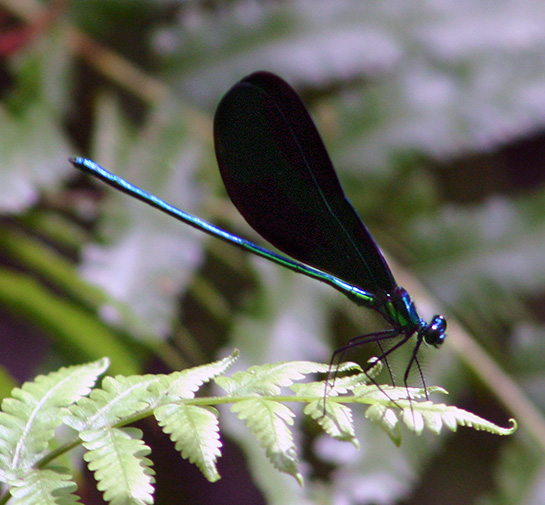
Variable Dancer (Argia fumipennis)

Dragonflies were flying more than 300 million years ago
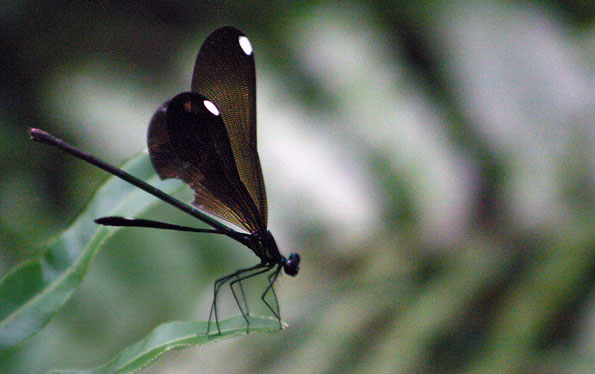
|
Dragonflies |
Damselflies |
| Generally strong fliers |
A weak, fluttery flight |
| Eyes touch on top of the head |
Eyes are well separated |
| Fore- & hindwings are of different shape |
Fore- & hindwings are of similar shape |
| At rest, the wings are held away from the body at an angle of approximately 180° |
At rest, the wings are held close to the body |
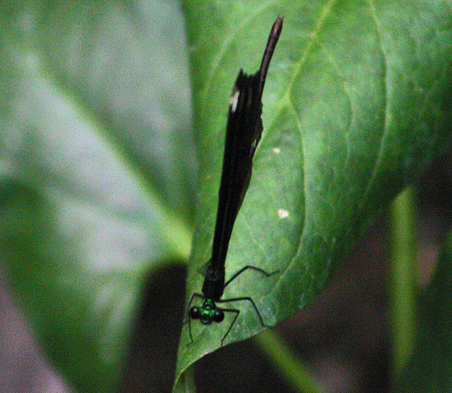
|
|
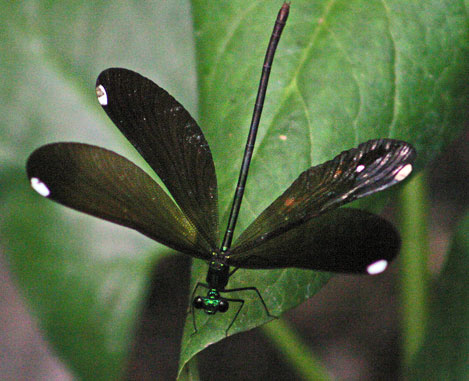 |
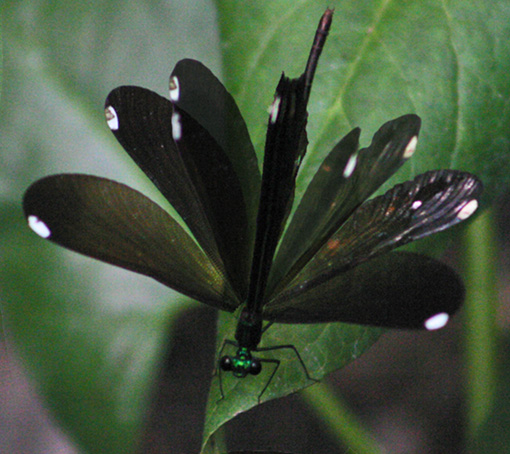 |
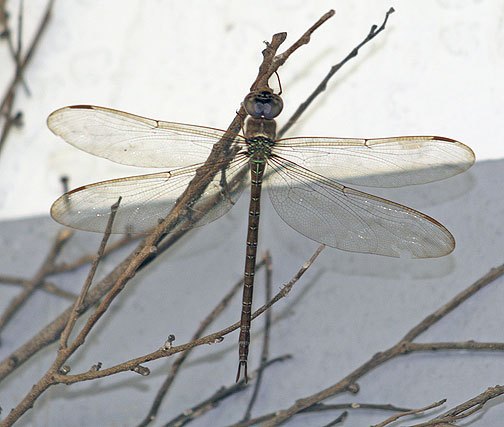
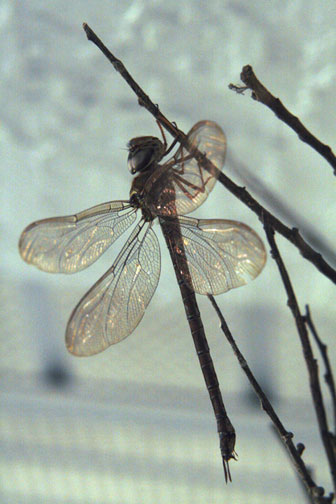
lying in wait for a meal
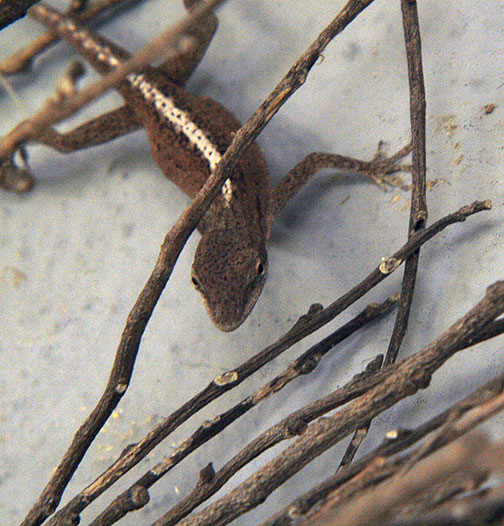 |
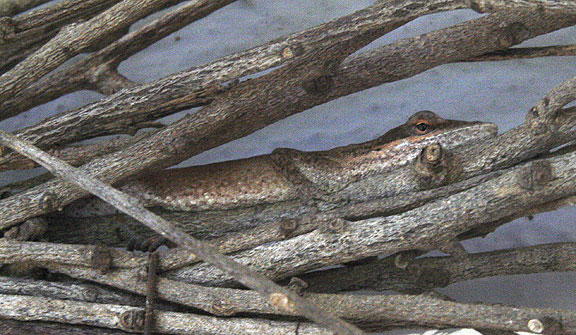 |
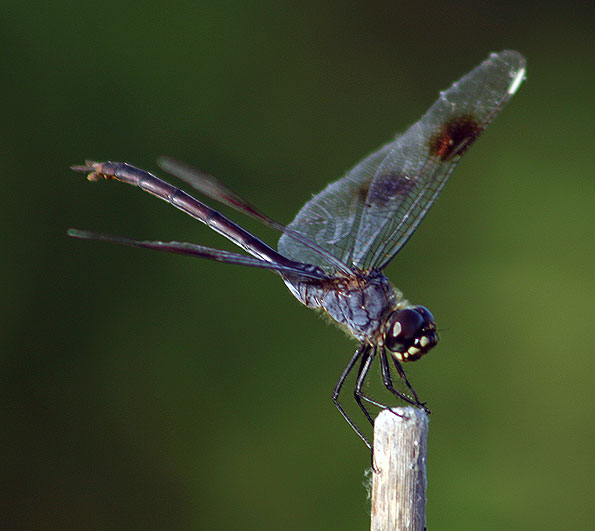
Four spotted Pennant
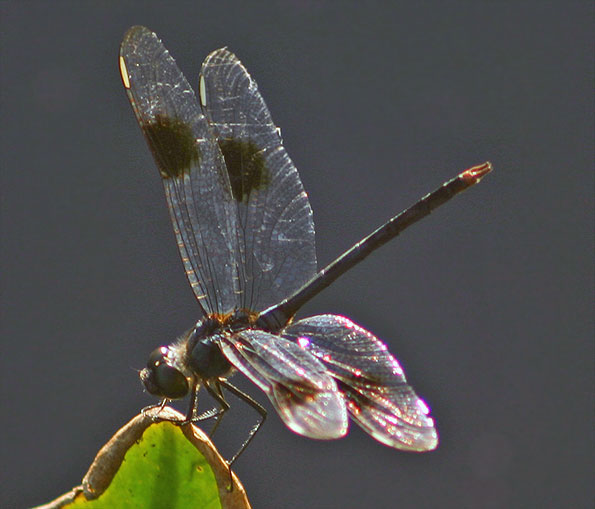
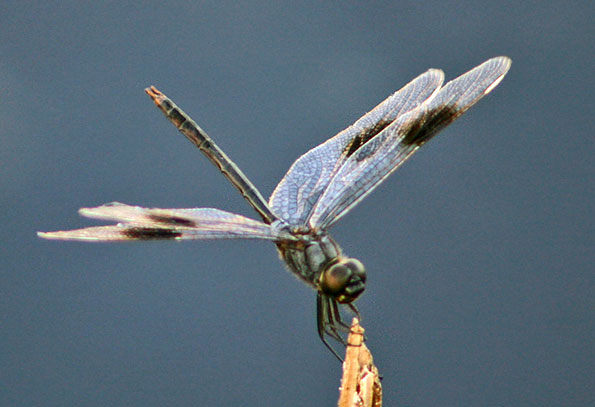
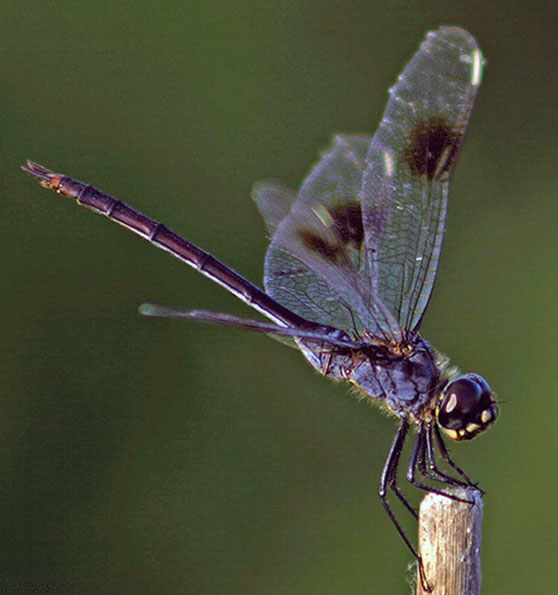
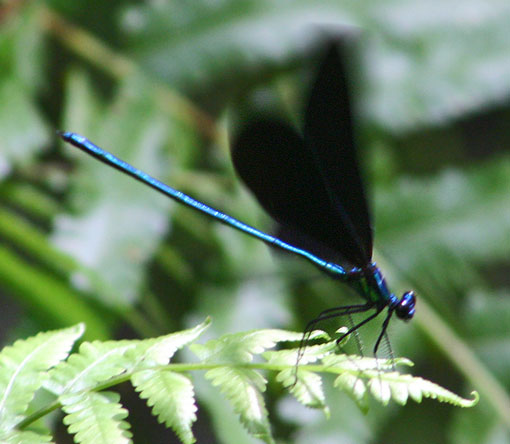
|
Dragonflies typically eat mosquitoes and other small insects like flies, bees, and butterflies and are valued as a predator that helps control the populations of harmful insects, such as mosquitoes. |
Great Blue Skimmer
Libellula vibrans Fabricius
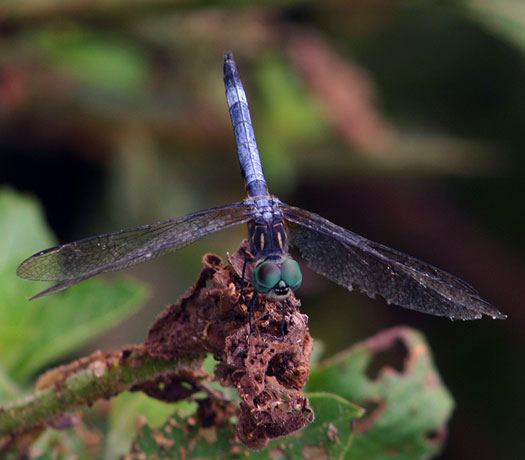
| Dragonflies have very good eyesight due to their eye structure giving nearly a 360° field of vision. |
| More than 80% of their brain is devoted to analyzing visual information. |
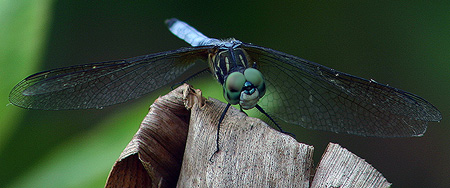
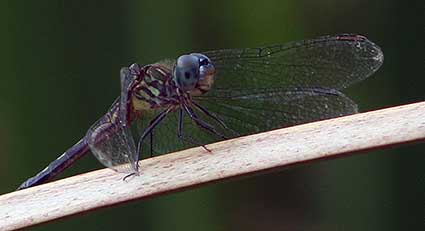
|
Dragonflies hold their prey in their legs and munch while flying - sort of like picking up an order of "mosquito to go". |
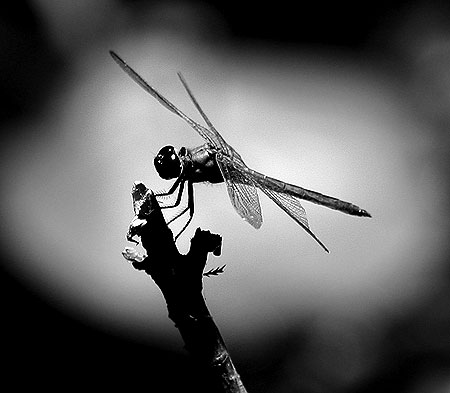
Eastern Pondhawk Dragonfly

Dragonflies are the world's fastest insects,
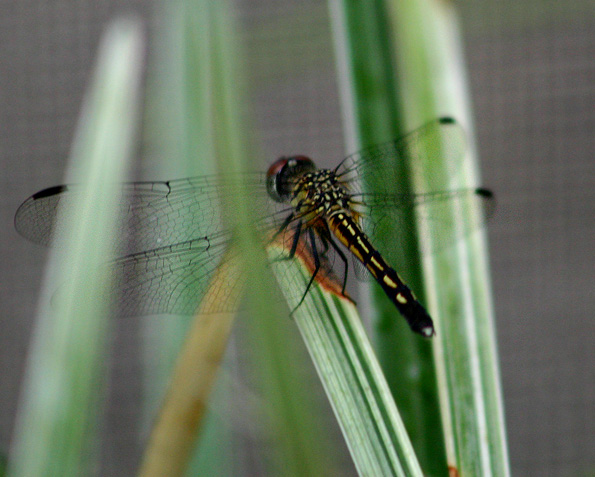
capable of reaching speeds of up to 60 mph
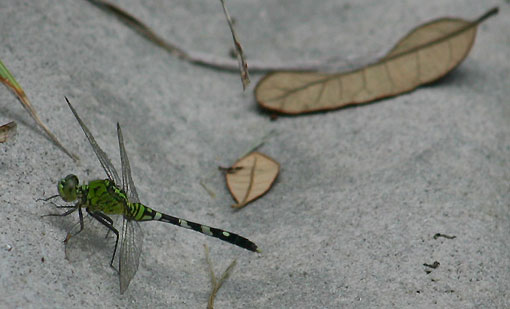
and can travel as much as 137 km (85 mi) in one day.
| They are also capable of hovering in the air for about a minute. |